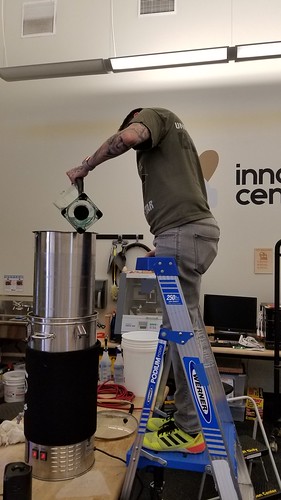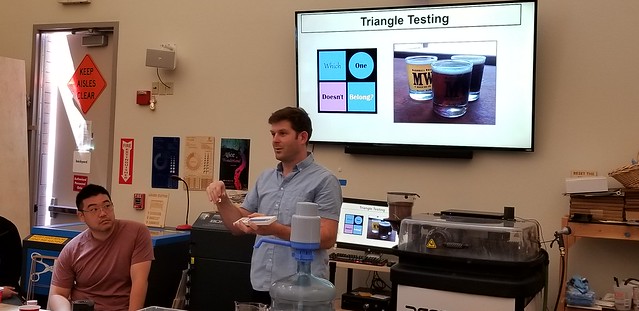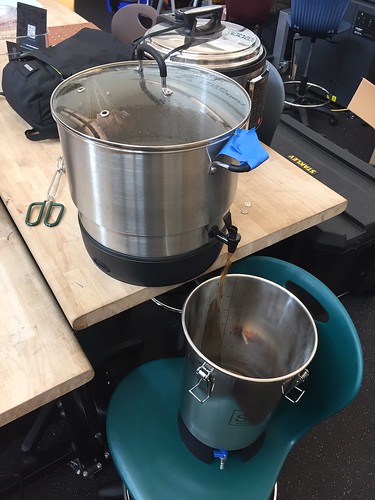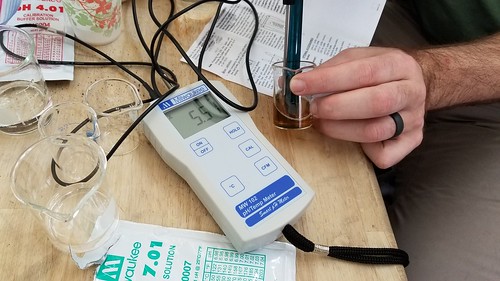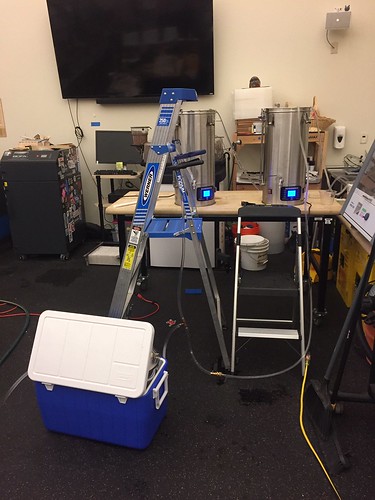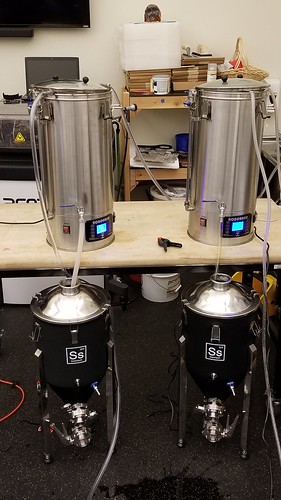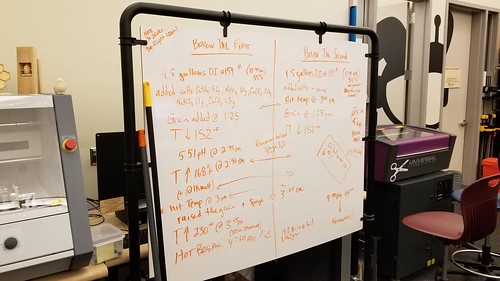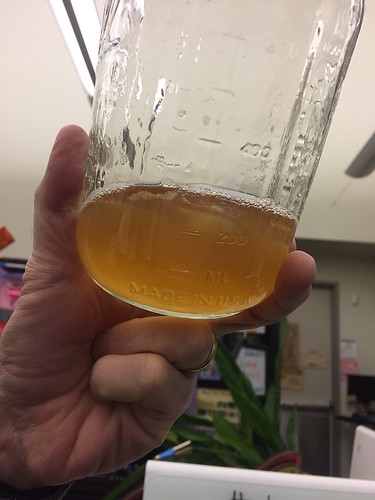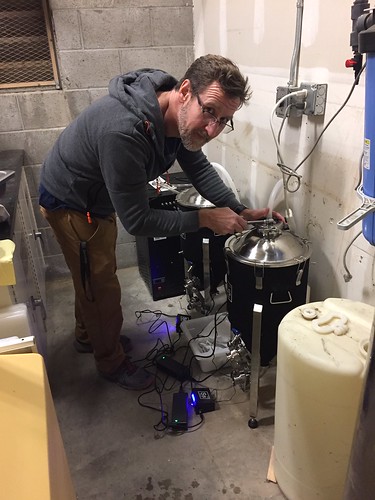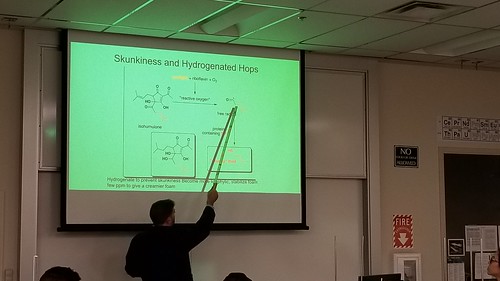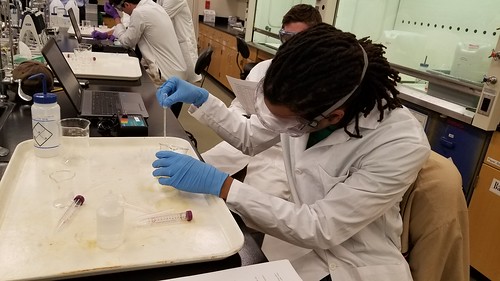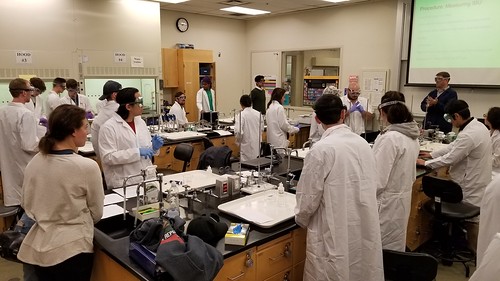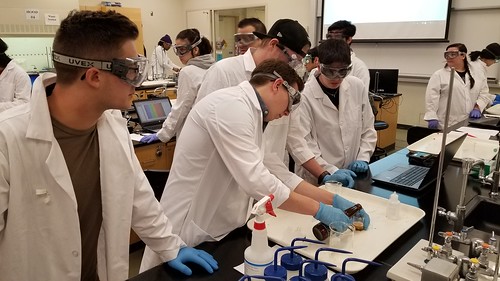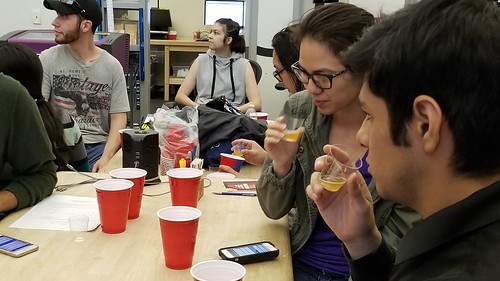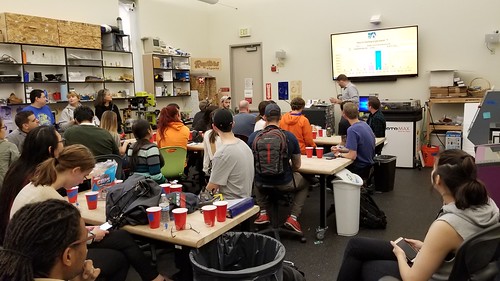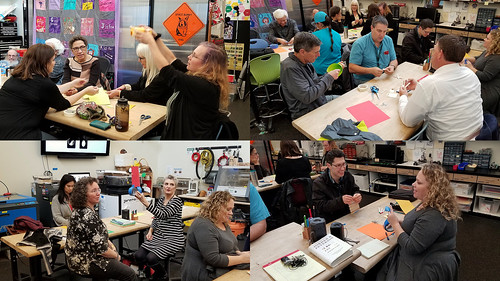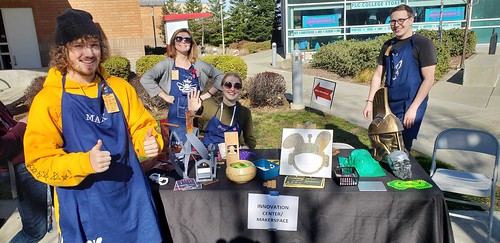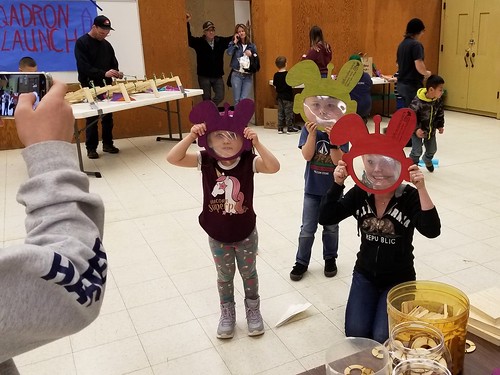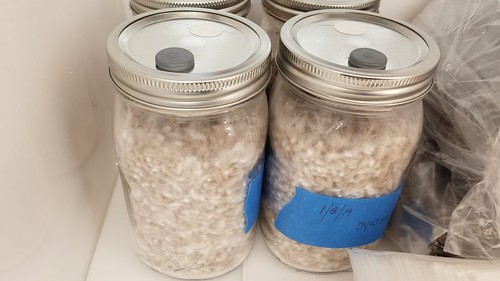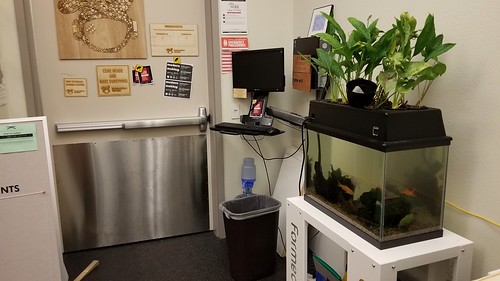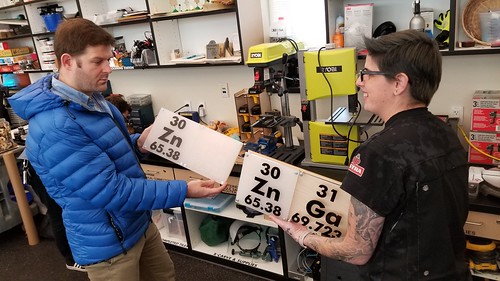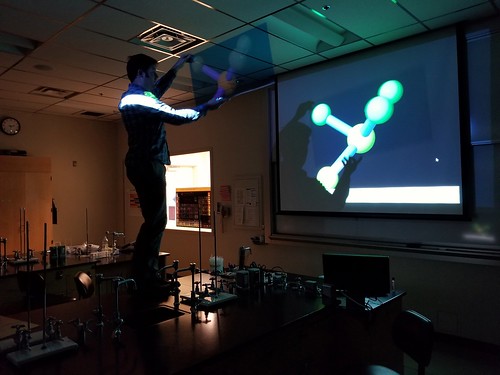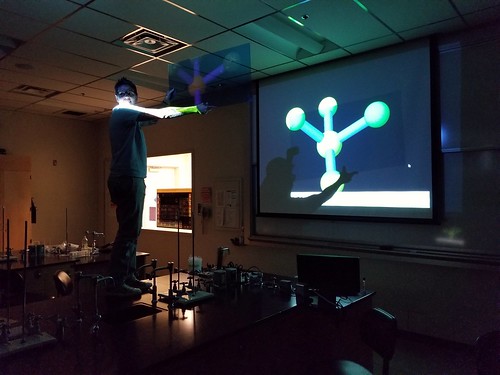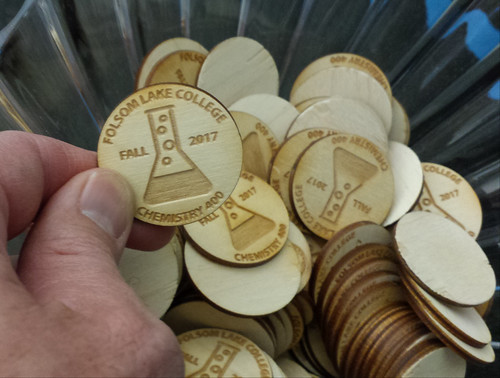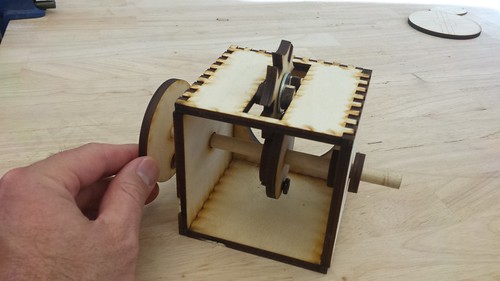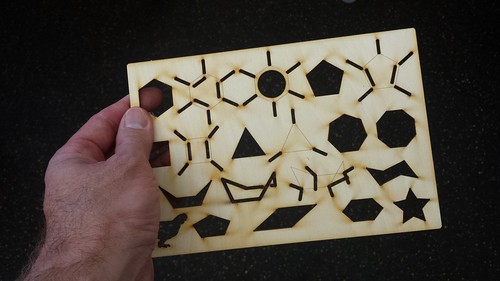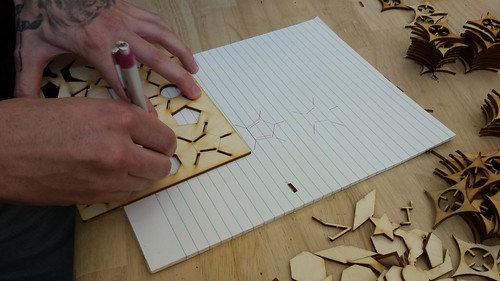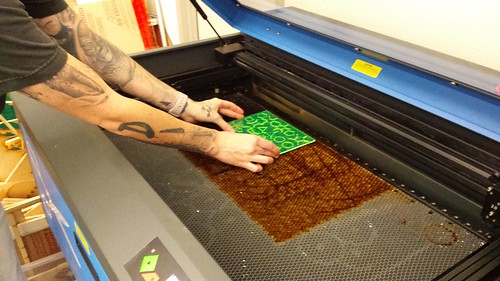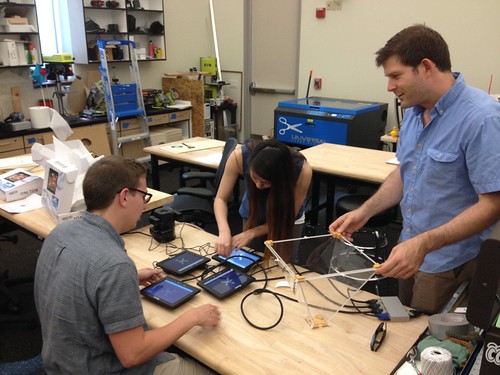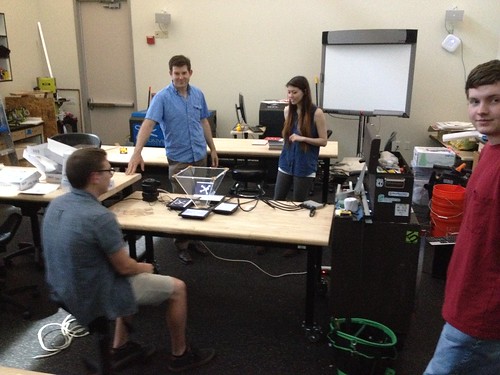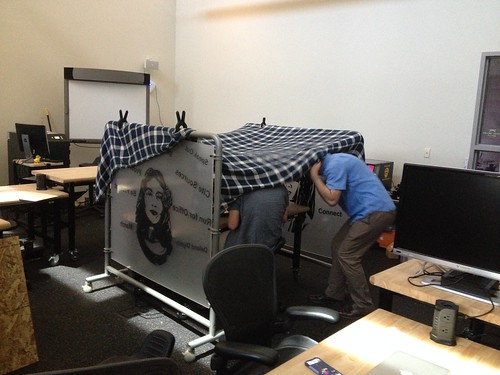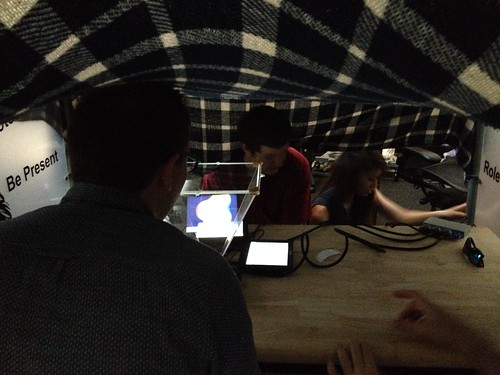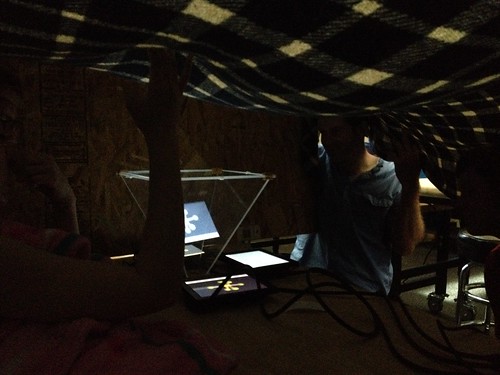We’ve been doing a bunch of work and prototyping in data sonification, for example playing weather data on music boxes, and building out a modular synth rig to provide realtime sound of sensor data. Max Mahoney (Chemistry) has been a key partner in the work, and has ideas about how we might sonify various chemical processes. The other day, we had the opportunity to do a rough prototype of sonifying liquid color change.
The first prototype (above) involved simply adding food coloring to a beaker of water, and using the ADDAC 308 module to transform light data to CV, which when fed to the modular synth lowers the frequency of the audible sine wave. The second prototype involved more carefully controlling the light by placing the apparatus in a box, sticking a battery + LED on the outside of the beaker, and poking a hole in the side of the box for the light sensor and another in the top so we could use a syringe to introduce the food coloring. Here’s version 2:
Lots yet to do, but we think we’ve got a functional prototype that Max intends to use in the classroom this semester.






